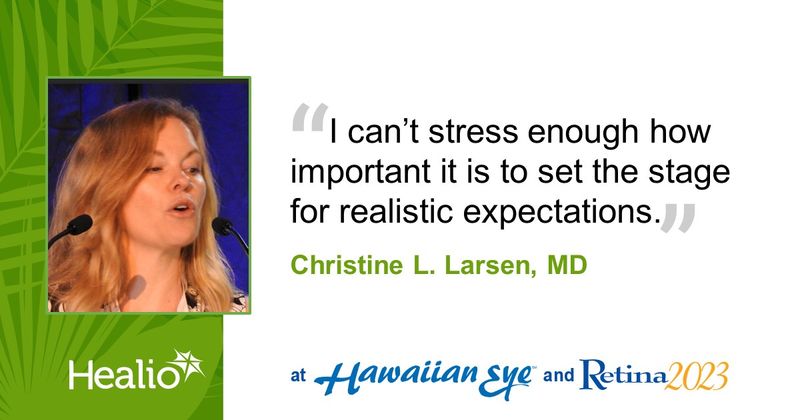Extra precautions needed when treating cataract patients with glaucoma
KOLOA, Hawaii — Cataract surgeons may need to monitor patients with glaucoma more than the average cataract patient, including discussing vision expectations and future IOP management, according to a speaker here.
“It is important to keep the IOP goal in mind as well as the stage and type of glaucoma to really decide what options to pair with your cataract procedure to meet your pressure goals,” Christine L. Larsen, MD, said at Hawaiian Eye 2023.

According to Larsen, surgeons should determine the stage and type of glaucoma and whether the patient is stable and well controlled. The patient’s history of steroid response needs to be known in case of an IOP spike.
Additionally, surgeons should discuss desired outcomes and vision expectations with the patient.
“I can’t stress enough how important it is to set the stage for realistic expectations in these patients,” she said. “I’m sure we’ve all seen the glaucoma patient who was ultimately disappointed after cataract surgery when their vision was ultimately limited by their disease.”
Viscoelastic used in phacoemulsification should be completely removed, and surgeons should check bleb integrity with a fluorescein strip at the end of the case if patients have previously undergone trabeculectomy.
After surgery, surgeons should be prepared for an IOP increase rather than a decrease, and they should plan ahead by monitoring the patient’s reaction to steroids and certain medications, Larsen said.
“I do often monitor these patients more frequently than I do my standard cataract patient,” she said. “It’s best to be prepared for what you might need to do should the IOP increase as opposed to decrease after the cataract is removed.”

